Davis DAV-6470 Handleiding
Davis
Temperatuurregelaar
DAV-6470
Bekijk gratis de handleiding van Davis DAV-6470 (5 pagina’s), behorend tot de categorie Temperatuurregelaar. Deze gids werd als nuttig beoordeeld door 61 mensen en kreeg gemiddeld 3.6 sterren uit 31 reviews. Heb je een vraag over Davis DAV-6470 of wil je andere gebruikers van dit product iets vragen? Stel een vraag
Pagina 1/5

1
Soil Moisture Sensor & Multi-Purpose Temperature
Probe Installation Instructions
For Wireless Leaf & Soil Moisture/Temperature Stations
The WATERMARK Soil Moisture Sensor and the Multi-Purpose Temperature
Probe are for use with the Vantage Pro2 Wireless Leaf & Soil Moisture/Temperature
Station, #6345. Please refer to your Wireless Leaf & Soil Moisture/Temperature
Station manual for more information on how to install and use the sensors.
Installation Procedures
Connecting the Sensors
• To extend the sensor cables, see “Extending Sensor Cables” on page 4.
• To use a temperature probe for temperature compensation of a soil moisture
sensor, install the sensor pair in corresponding connectors: 1 & 1, 2 & 2, 3 &
3, and 4 & 4.
• If no soil temperature probe is used, the station will use a default temp of
75°F (24°C) to compensate the soil moisture readings.
• If you are installing a temperature probe that is not providing temperature
compensation for a soil moisture reading, do not use a connector that matches
to any installed soil moisture sensor.
• If a soil moister / temperature sensor pair do not use matching connectors, the
soil moisture reading can be off as much as 1% for every 1
° °F (0.5 C) error in
the soil temperature.
1. Run the sensor cables up through the grommets on the bottom of the station
housing.
2. Connect soil moisture probes to the SOIL connectors.
3. Connect the temperature probes to the TEMP connectors.
Cable Clam
p
Mount
Leaf Wetness
Sensor Cable
Rubber
Grommets
SENSOR
SENSOR
SENSOR
SENSOR
SENSOR
INTERFACE
INTERFACE
INTERFACE
INTERFACE
INTERFACE
MODULE
MODULE
MODULE
MODULE
MODULE
Cable Clamp
Cable Clam
p
Screw
Temperature Moisture
1 2 3 4 1 2 3 4
Soil Moisture
Sensor Cable
Temperature
Probe Cable
Sensor Cables Enter Station
Housing Through Grommets
Connecting Sensor Cable to
Terminal Block

2
4. Secure all sensor cables through the provided cable clamps and then secure the
mounts by driving a screw through the clamp into the cable clamp mounts
located above the grommets.
Before “Planting” the Sensors
If you can, soak soil moisture sensors overnight in water before installing them.
• Always “plant” a wet soil moisture sensor.
• If time permits, wet the soil moisture sensor for 30 minutes in the morning and let
dry until evening, wet for 30 minutes and let dry overnight, wet again for 30 min-
utes the next morning and let dry again until evening. Soak over the next night
and install wet. This will improve sensor response during the first few irrigations
or waterings.
“Planting” the Sensors
1. Make sensor access holes to the depth required with a 7/8” diameter rod.
• Make a hole for the soil moisture sensor and a sepa-
rate adjacent hole for the temperature probe.
• For very coarse or gravely soils, an oversize hole of 1”
to 1 1/4” may be needed to prevent abrasion damage
to the soil moisture sensor membrane. In this case,
you will need to “grout in” the sensor with a slurry
made from the sample soil to get a snug fit in the soil.
2. Always install sensors in the active root system of the
crop with a snug fit in the soil.
CAUTION: In gravelly soils and with deeper sensors, you must
use extra caution to install the soil moisture sensor
without damaging the membrane.
• Lack of a snug fit is the biggest problem in obtaining
good soil moisture sensor readings.
• The ideal method of making the access hole is to have
a stepped tool. This makes an oversize hole for the
upper portion and an exact sized hole at the bottom
where the sensor is located.
2-1/2" (64 mm)
7/8" (22.5 mm)
Cold rolled steel,
round rod
1-1/4" (32 mm)
approximate
diameter
Overall length
variable
Stepped Sensor Installa-
tion Tool

3
3. Fill the hole with water and push the sensor down into the hole so it bottoms out.
• A length of 1/2” Class 315 PVC pipe (pipe inside diameter = 0.716”, 18.18mm)
fits snugly over the sensor collar and can be used to push the sensor. A good snug
t in the soil is important.
4. You can solvent weld the 1/2” Class 315 PVC pipe to the sensor collar for easier
installation and removal. Use a PVC/ABS cement (IPS Weld-on #794 or equiva-
lent).
5. Carefully backfill the access hole with soil to eliminate any air pockets which
could allow water to channel down to the sensor.
6. If you are using temperature sensors, install the temperature sensor next to the
soil moisture sensor.
Note: Soil moisture sensors will provide better accuracy after one or two irrigation cycles, during which
time they “break-in” and acclimate to the soil conditions.
“Planting” Sensors in Turf or Lawns
1. Cut a slight “V” shaped trench about 5” wide at the top, and about 6” deep into
the turf, and about 6” long.
2. Lift out the turf plug piece you just cut.
3. Press the sensors into the soil at about a 45 degree angle into the side of the
trench to set the sensors about 3”-5” below the soil surface. Make sure they are
set snugly in the soil.
4. Replace the plug removed from the trench and compact it back into place. It will
repair itself in short order.
5. Run the wires to the Soil Moisture Station and connect them as described in
“Connecting the Sensors” on page 1.
Sensor
Wires
Tape
1/2" Class 315 PVC Pipe
(inside diamter = 0.716",
18.18mm)
Pipe welded to
sensor collar with
PVC/ABS cement
Soil Moisture
Sensor
PVC Pipe Welded to Soil
Moisture Sensor Collar
Product specificaties
| Merk: | Davis |
| Categorie: | Temperatuurregelaar |
| Model: | DAV-6470 |
Heb je hulp nodig?
Als je hulp nodig hebt met Davis DAV-6470 stel dan hieronder een vraag en andere gebruikers zullen je antwoorden
Handleiding Temperatuurregelaar Davis

23 Augustus 2023
Handleiding Temperatuurregelaar
- Techno Line
- Bulex
- Panasonic
- Phoenix Contact
- Technoline
- Cocraft
- Jumo
- Opticlimate
- Emko
- Hager
- Dimplex
- Ziehl
- Honeywell
- Ventus
- EBERLE
Nieuwste handleidingen voor Temperatuurregelaar
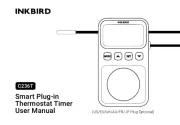
7 Juli 2025
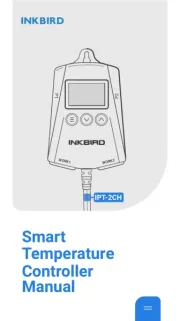
7 Juli 2025
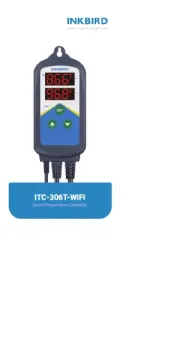
7 Juli 2025

8 Mei 2025
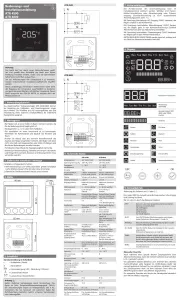
25 Maart 2025
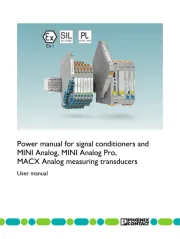
29 Januari 2025

5 December 2024

5 December 2024
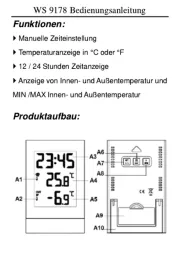
3 December 2024
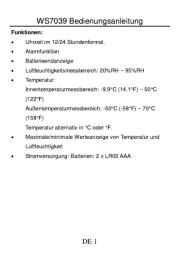
3 December 2024